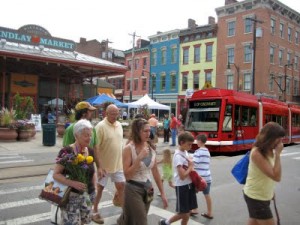 City Council is expected to vote today on whether to approve $64 million in bonds toward funding the Cincinnati Streetcar. Providing this local funding greatly increases the likelihood of receiving federal funding for the remainder of the cost of the project. Cincinnati was passed up in the first round of TIGER funding due to a lack of local financial support. Several additional federal funding sources are available, including one specifically targeted at urban circulator projects such as streetcars.
City Council is expected to vote today on whether to approve $64 million in bonds toward funding the Cincinnati Streetcar. Providing this local funding greatly increases the likelihood of receiving federal funding for the remainder of the cost of the project. Cincinnati was passed up in the first round of TIGER funding due to a lack of local financial support. Several additional federal funding sources are available, including one specifically targeted at urban circulator projects such as streetcars.
On April 19, Council voted to support $2.6 million of funding to keep the project moving forward. Council members Quinlivan, Cole, Qualls, Thomas, Berding, and Bortz voted in favor of the funding in April, and are expected to also approve the bond issue today.
Twenty-nine citizens spoke in favor of the Streetcar project at the April 19 council meeting, while only two spoke against it. This overwhelming community support certainly played a role in council’s decision. To ensure council continues to support the Streetcar and pass today’s critical bond issue, please attend today’s session if you are able and register to speak in favor of the project.
Today’s meeting will begin at 2:30 at City Hall. To show your support of the Streetcar, show up 15 minutes early to fill out a card to speak at the meeting. Alternatively, you can e-mail your comments to City Council.
Get live updates from today’s council meeting by following the #CincyStreetcarVote tag on Twitter.


